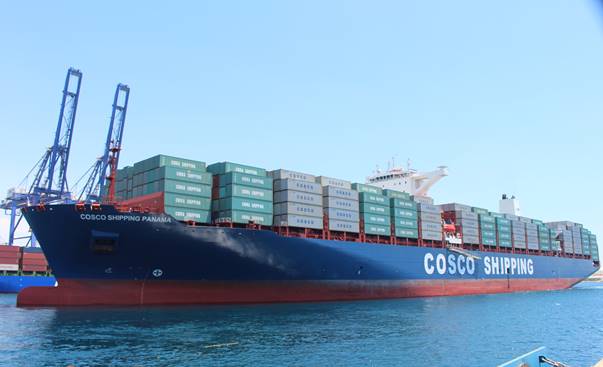
HR futures: 'Gimme Shelter'
This chart of the rolling second-month CME hot-rolled coil (HRC) future dating back to the start of 2022 has been as volatile as a herd of “Wild Horses.”

This chart of the rolling second-month CME hot-rolled coil (HRC) future dating back to the start of 2022 has been as volatile as a herd of “Wild Horses.”

Worthington Steel’s earnings slipped in its fiscal fourth quarter while sales ticked up.

A press conference at a Cleveland-Cliffs mill in Ohio touched upon several topics, including the unfair trade practices of Mexico and China and Nippon Steel’s proposed acquisition of U.S. Steel.

Earlier this week, SMU polled steel buyers on an array of topics, ranging from market prices, demand, and inventories to imports and evolving market events.

We have heard ominous warnings about a flood of Mexican steel threatening the US market. It's the kind of rhetoric that gets thrown around often with little regard for the facts. The reality is that the Mexican steel surge is simply not happening, and the US steel industry has consistently maintained a significant trade surplus in finished products with Mexico. In 2023 alone, this surplus exceeded $3 billion.

ArcelorMittal Mexico said it's on the brink of severing labor relations with striking members of the local mining union. This serious move comes as an illegal strike and the resulting mill outage persist into their second month, posing a significant threat to the continuation of the mill’s operations.

The chairman of a large American steel company called for Mexico to be dropped from USMCA at a steel industry conference last week. This follows earlier calls from members of Congress to reinstate Section 232 duties on Mexico. How did we get to this point?

Demand has remained persistently weak across the globe for sheet steel, weighing on prices. US HR coil prices fell the furthest this week as high-volume, low-priced deals were transacted as mills looked to fill order books and competed with one another amid relative demand weakness. Meanwhile, European prices were also down due to low demand […]

Outgoing Mexican President Andrés Manuel López Obrador (AMLO) said the incoming administration of Claudia Sheinbaum will be able to resolve the woes of shuttered steelmaker Altos Hornos de México (AHMSA).

ArcelorMittal Mexico is suffering a significant production loss as the labor strike at its mill in Lazaro Cardenas is now in its fourth week.

North American auto assemblies ticked higher in May, moving up for the second straight month and reaching a nine-month high, according to LMC Automotive data. While assemblies were up month on month (m/m), they are still 1.7% lower year on year (y/y).

The conventional wisdom is that sheet prices will trend down for the next few weeks (maybe the next two months) before rising again in August – around when lead times stretch into the busier fall months. We see that reflected in our survey results and in market chatter. And there are plenty of data points to choose from if you want to support of that position.

As the scrap market for June settles at lowered levels, let’s look at the situation for exports of ferrous scrap from the US East and Gulf coasts. Despite declines in the North American ferrous markets over the last two months, export prices have remained range-bound within a tight trading window. After a brief decline last […]

Canacero has weighed in on the workers' protest at ArcelorMittal Mexico’s Lazaro Cardenas mill, urging a quick resolution to the dispute.

US light-vehicle (LV) sales rose to an unadjusted 1.43 million units in May, up 4.8% vs. year-ago levels, the US Bureau of Economic Analysis (BEA) reported. The year-on-year (y/y) growth in domestic LV sales came in with a 7.6% month-on-month (m/m) boost.

Total steel exports rebounded 6% in April, rising to 842,000 short tons (st) according to the latest US Department of Commerce data.

The USMCA is an important trade agreement, as long as the member countries honor its requirements. These were the sentiments echoed by top officials of the Steel Manufacturers Association (SMA) and Metals Service Center Institute (MSCI) during a press conference at their annual meeting last week in Scottsdale, Ariz.

Mexican steelmaker Deacero recently broke ground on a $600-million mini-mill in Ramos Arizpe, Coahuila, in northern Mexico.

Now that June has arrived, the official countdown until SMU’s Steel Summit 2024 – North America’s premier flat-rolled steel conference – has begun. If you haven’t already registered, don’t delay. More than 700 attendees from more than 300 companies have already registered to be in Atlanta this August. In short, it’s poised to be another […]

It feels like the summer doldrums arrived a little earlier than usual this year. I know there had been rumors of a price hike. The prospect of a sharply lower June scrap trade probably didn't help the chances of that actually happening.

ArcelorMittal plans to continue to invest and expand its operations in North America, a senior company executive said in an exclusive interview with SMU. “People were talking about our demise in North America or maybe our exit. And I want to emphasize that nothing could be further from the truth,” said Brad Davey, executive vice president and head of corporate development at the company.

Steel production at ArcelorMittal Mexico has been interrupted due to an “illegal protest” and blockade outside the company’s mill in Lazaro Cardenas, Mich. Some Sindicato Minero union members, dissatisfied with the profit-sharing payments they received, have been obstructing access to the mill since Friday, May 24. As a result, ArcelorMittal had to stop blast furnace […]

We’re just a few months away from SMU’s Steel Summit 2024 – North America’s premier flat-rolled steel conference.

A strike outside the ArcelorMittal Mexico plant in Lazaro Cardenas, Michoacán, is threatening to impact blast furnace operations at the mill.

Venture Steel announced plans to expand its flat rolled processing facility in Ramos Arizpe, Coah., Mexico.

The free market operates best when it is freest. But all governments intervene in markets in response to conditions that threaten peaceful progress. President Biden decided last week that market intervention was justified. He approved a report from the US Trade Representative (USTR) that recommended continuing the “Section 301” tariffs on Chinese imports into the United States.

The USMCA should be strong enough to handle trade disagreements on steel between the US and Mexico, according to the American Iron and Steel Institute’s (AISI’s) Kevin Dempsey.

Mexican steelmaker Talleres y Aceros (TYASA) broke ground this month on the construction of a new special bar quality (SBQ) rolling mill in the state of Veracruz.

Cleveland-Cliffs’ Lourenco Goncalves thinks trade measures announced by the US government on Tuesday against China were just the opening salvo in a series of trade actions. Case in point: The Biden administration targeted China’s “unfair” trade policies with additional tariffs on an array of Chinese-made goods - including steel, aluminum, and EVs.

The Mexican federal government backed down on the application of tariffs on raw non-alloyed and alloyed aluminum decreed on April 22.